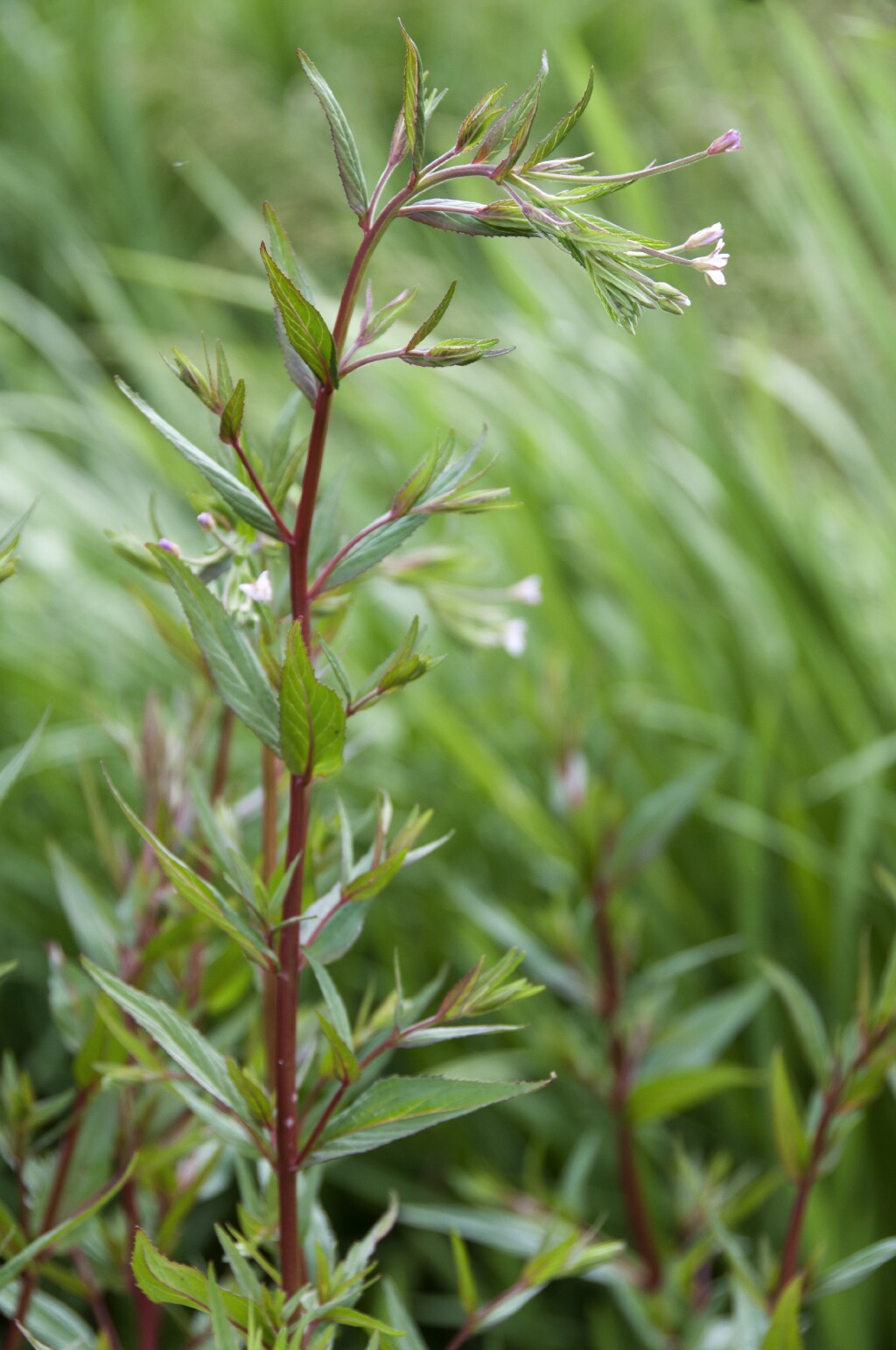Epilobium ciliatum
Raf. Glandular Willow-herbErect perennial (occasionally annual) herb, usually to 60 cm high, sometimes to 2 m high, usually well-branched at the base; stems with a fine pubescence of coiled hairs on ridges decurrent from leaf bases and often with numerous glandular hairs especially in the flowering regions. Leaves opposite on lower stems, alternate near inflorescences, lanceolate, 2.5–12 cm long, 5–30 mm wide, glabrous but for a few hairs on margins, petiole and main vein, margins with numerous tiny teeth, apex tapering or acuminate, base broad and rounded; petiole 1–3 mm long. Flowers with a conspicuous ring of long hairs inside the hypanthium; sepals linear-triangular, 2–4 mm long; petals white or purplish-pink, 3.5–5.5 mm long. Capsule 4.5–8.5 cm long, with a close, partly glandular pubescence; pedicel 0.3–1 cm long; seeds 0.9–1.2 mm long, comose, surface with laterally flattened papillae in obvious longitudinal lines. Flowers mainly Nov.–Mar.
Wim, GleP, VVP, VRiv, MuF, GipP, OtP, Gold, CVU, NIS, EGL, EGU, HSF, HNF, OtR, Strz, MonT, HFE, VAlp. Also naturalised WA, SA, Qld, NSW, ACT, Tas. Native to North and South America, possibly also far East Asia. An urban weed that has become established mainly in eastern Victoria, usually in damp or well-watered situations, and is particularly troublesome as a nursery weed. .
Jeanes, J.A. (1996). Onagraceae. In: Walsh, N.G.; Entwisle, T.J., Flora of Victoria Vol. 3, Dicotyledons Winteraceae to Myrtaceae, pp. 930–942. Inkata Press, Melbourne.
 Spinning
Spinning




